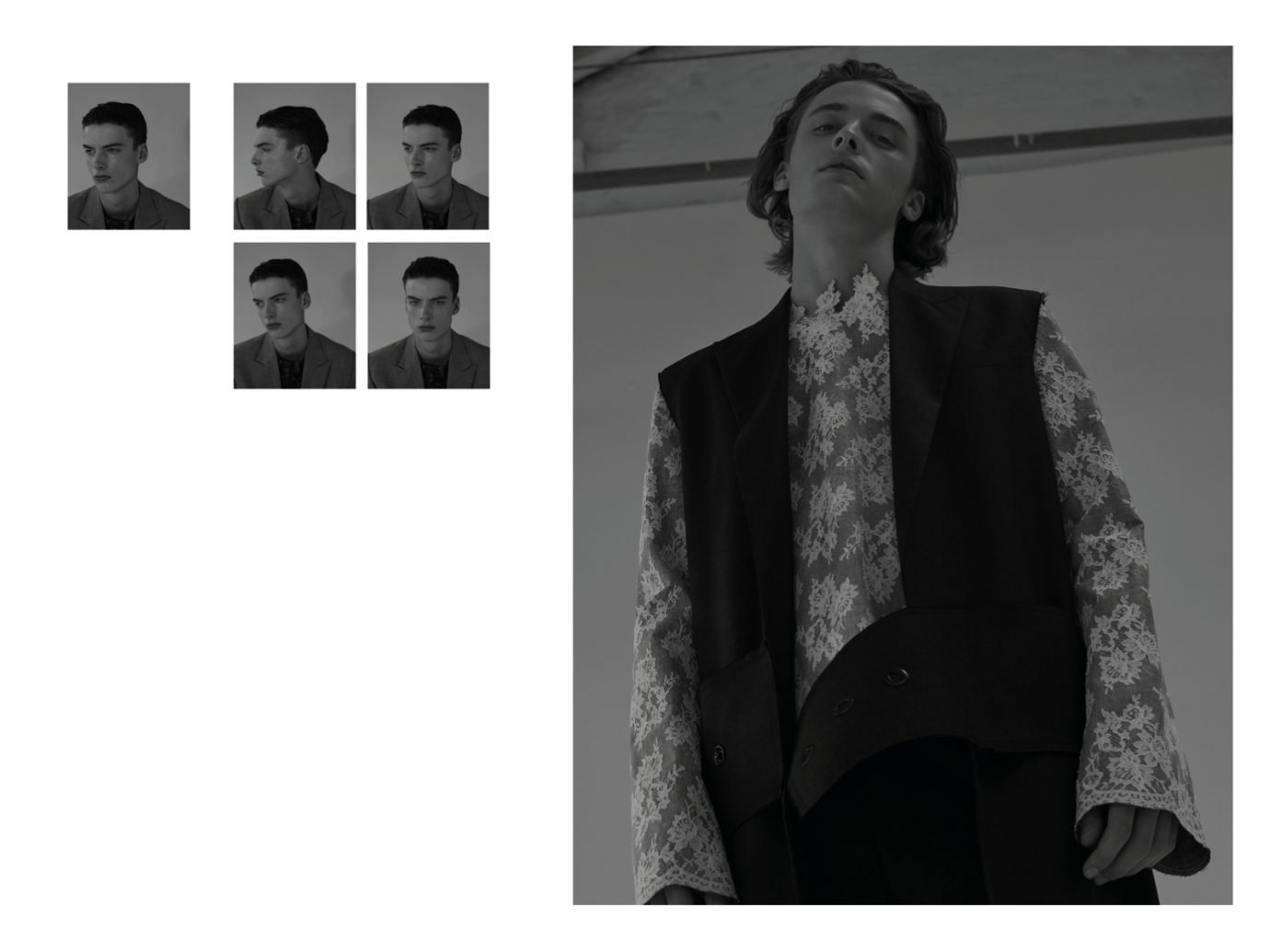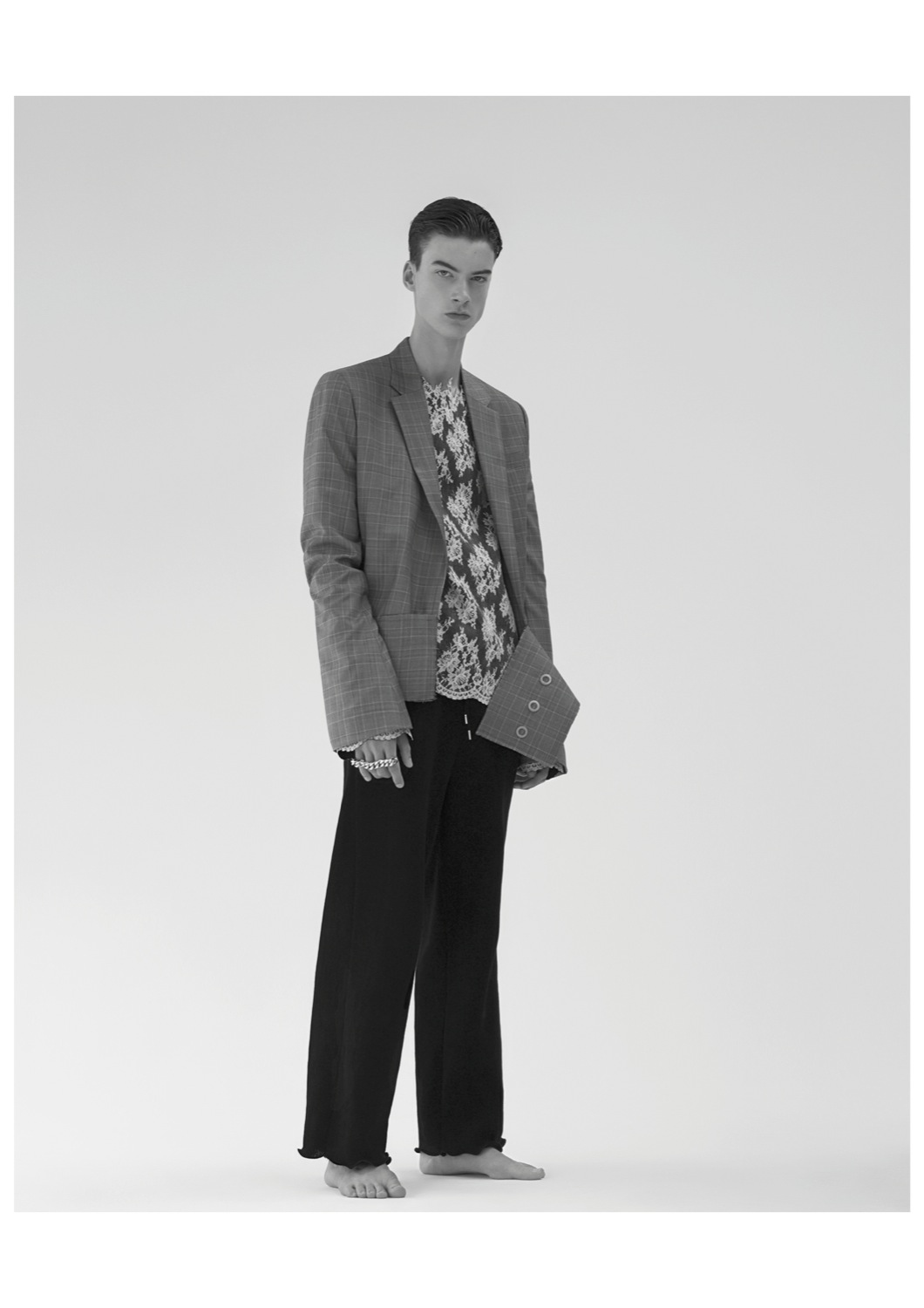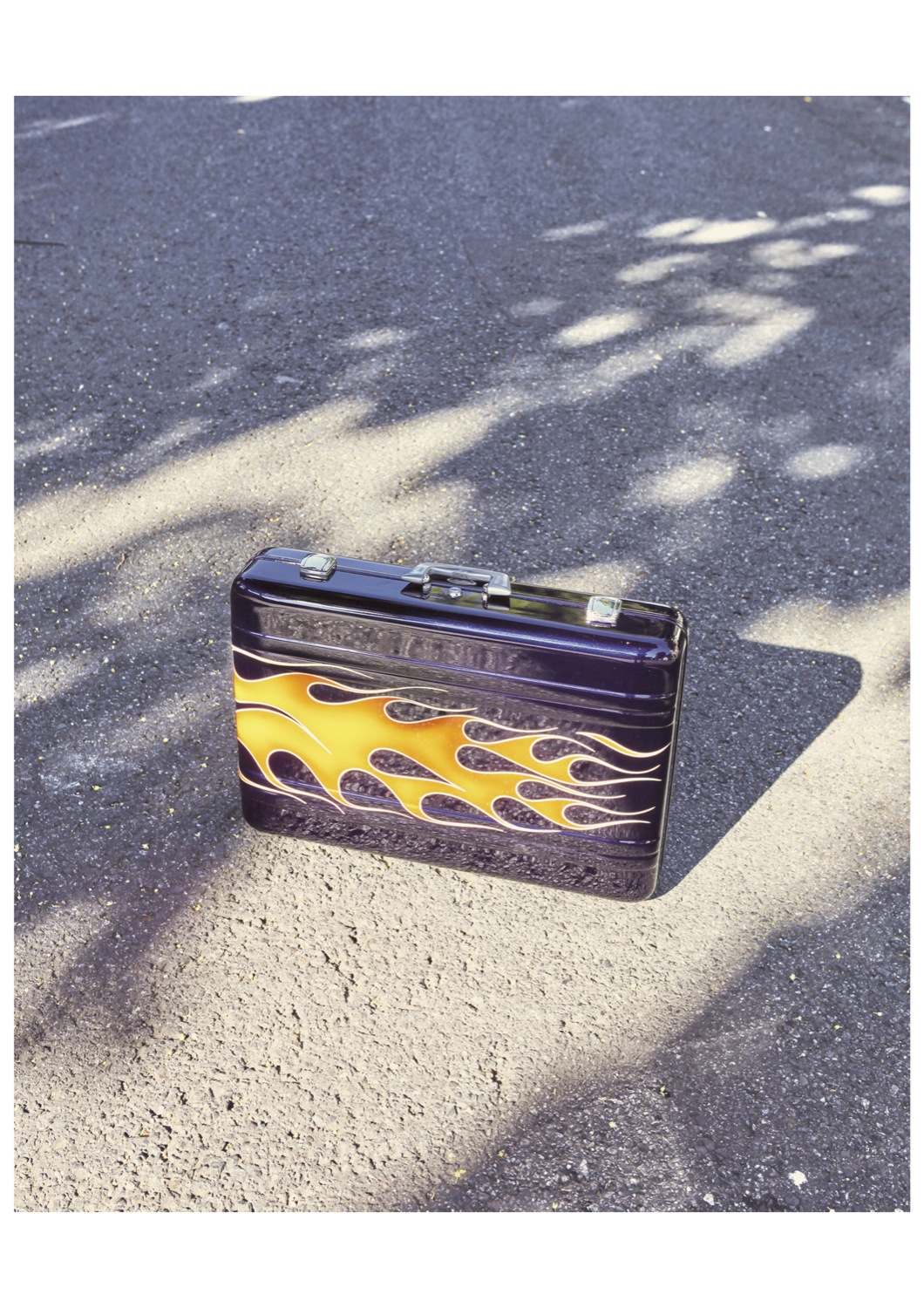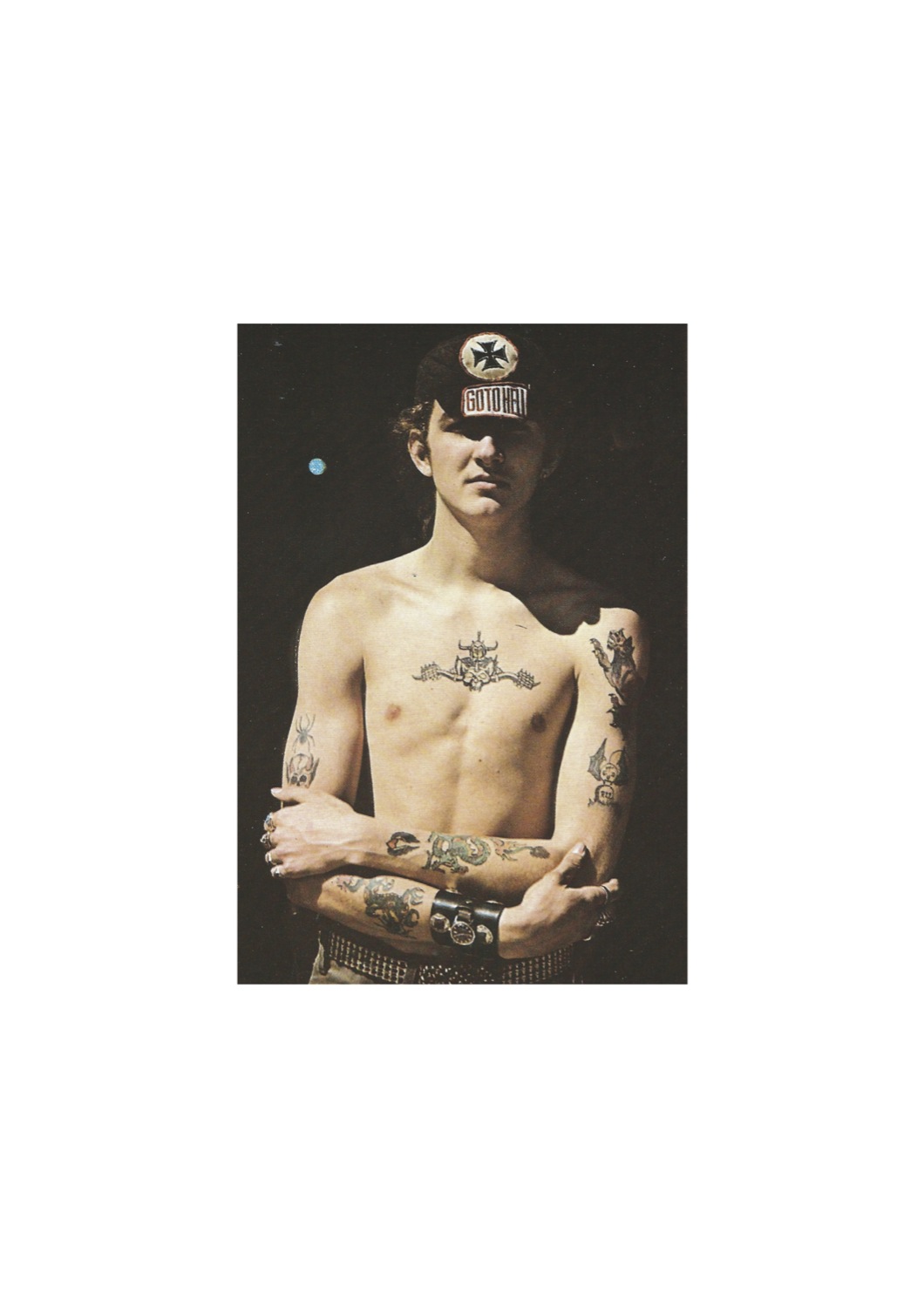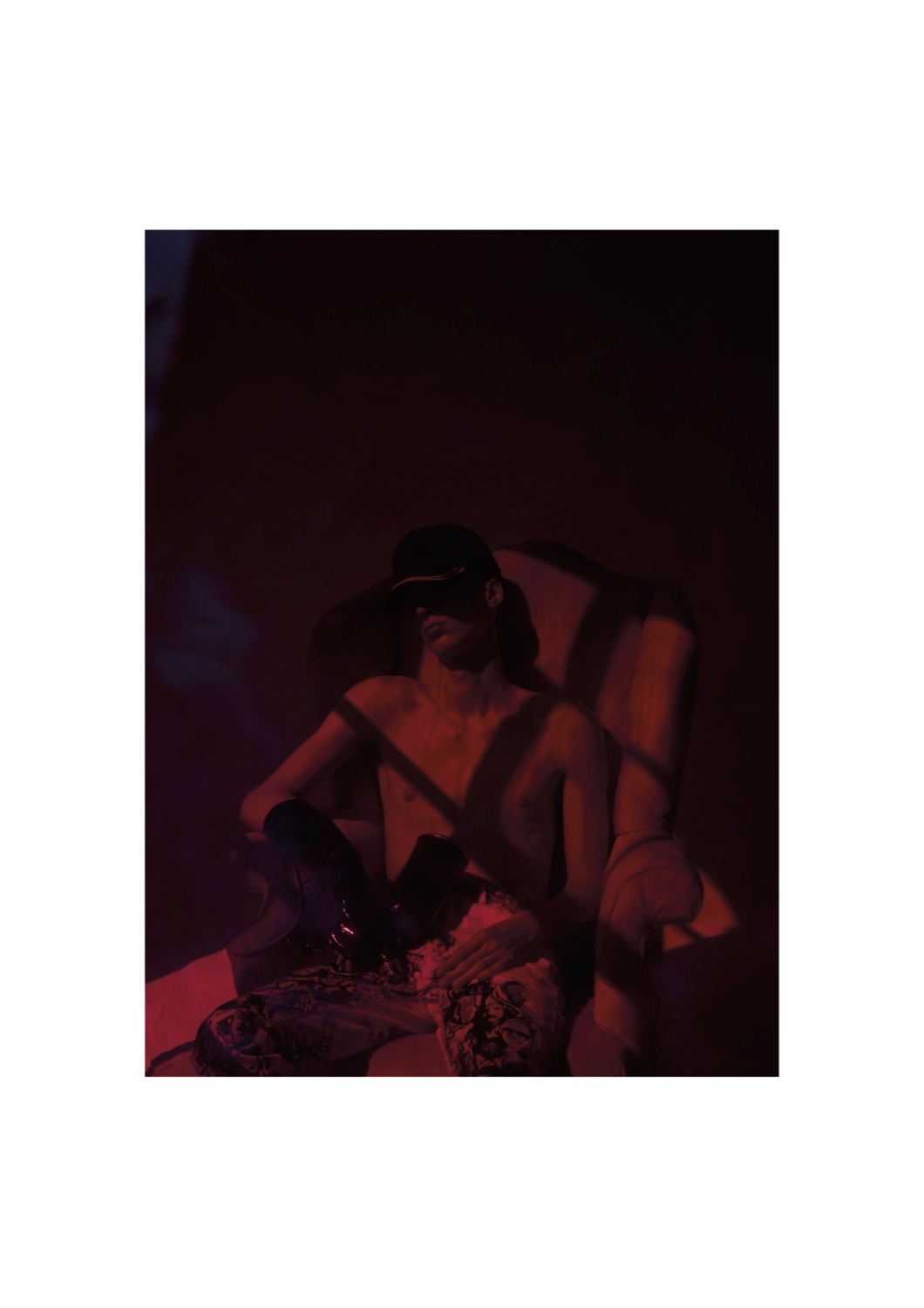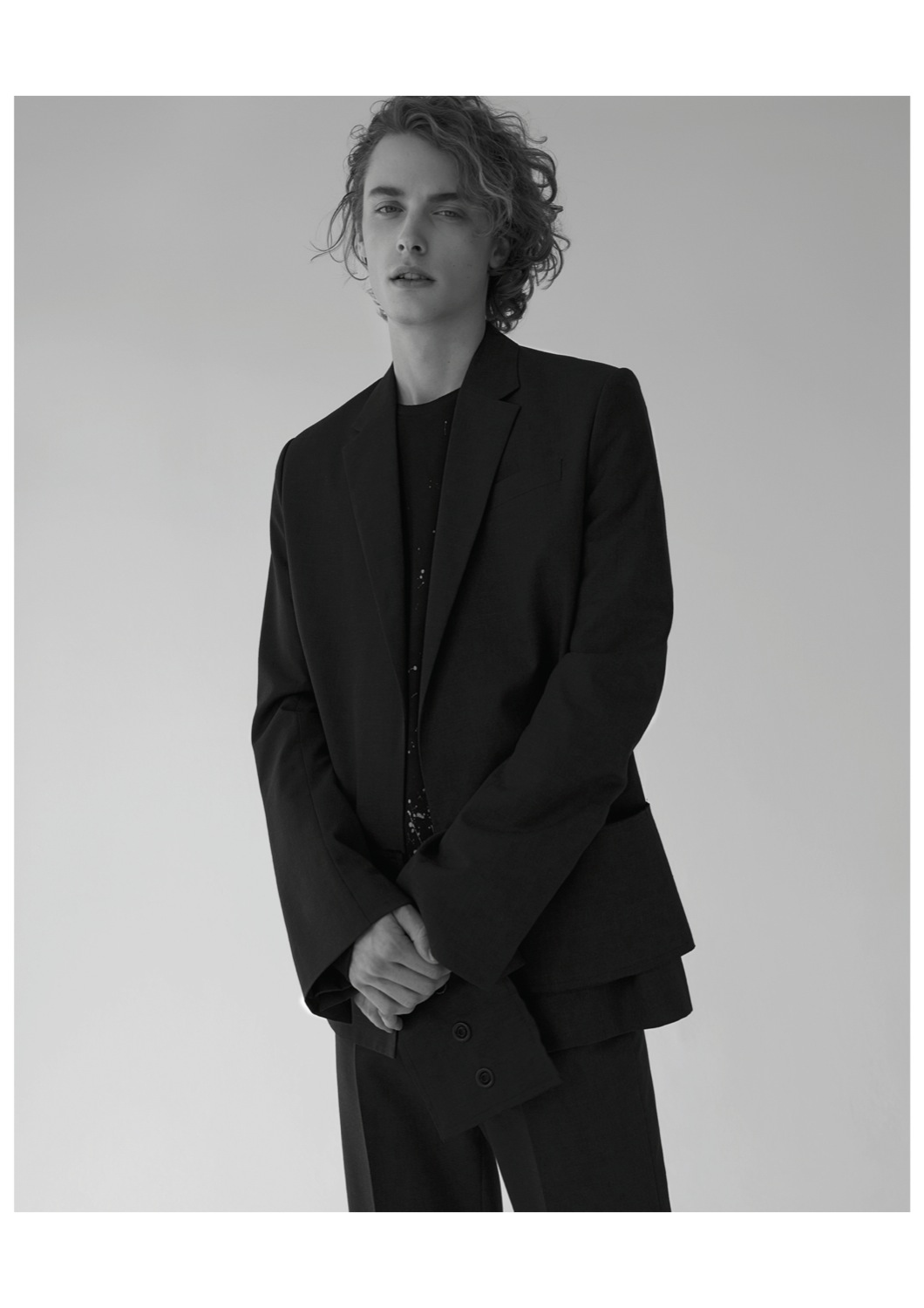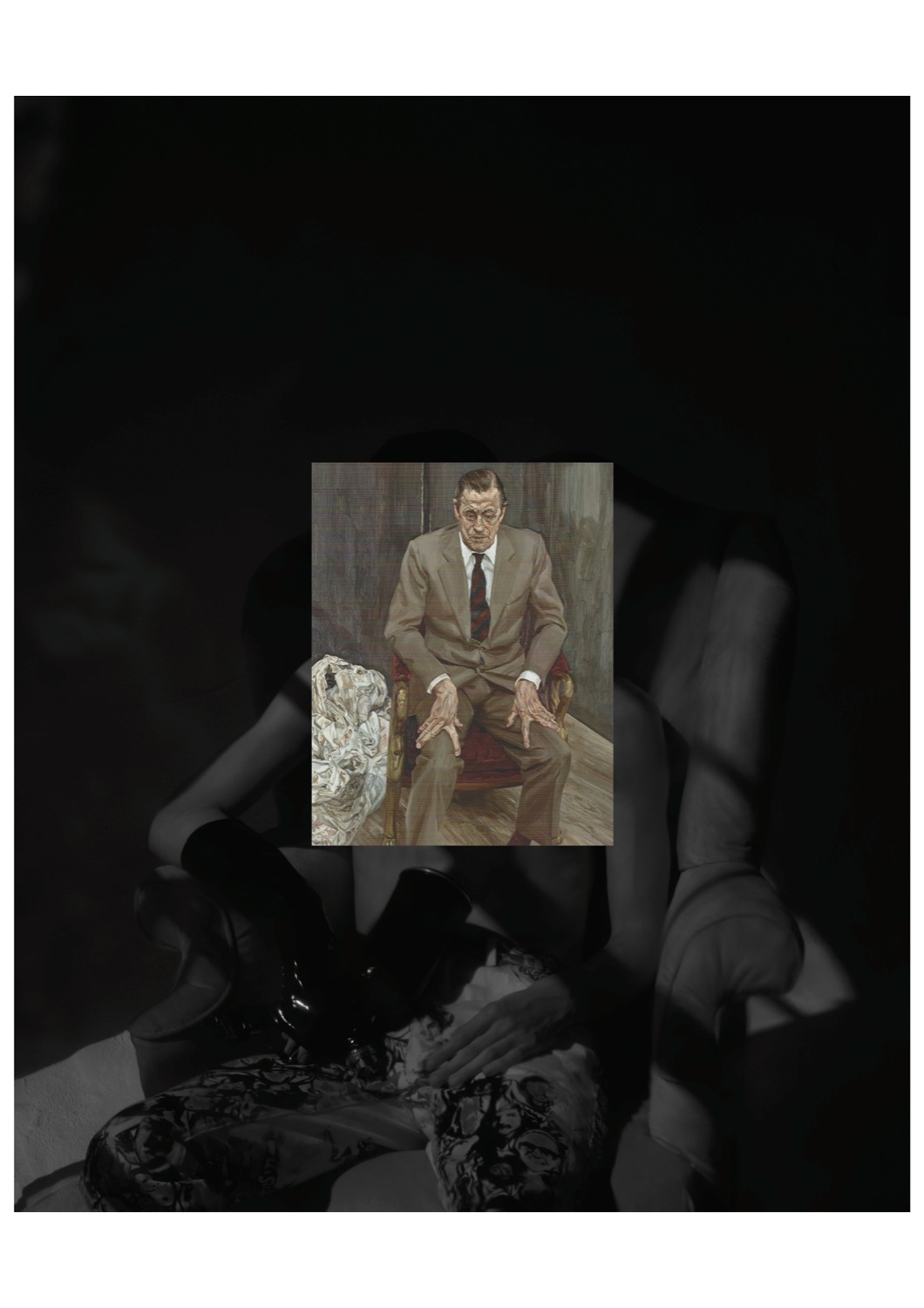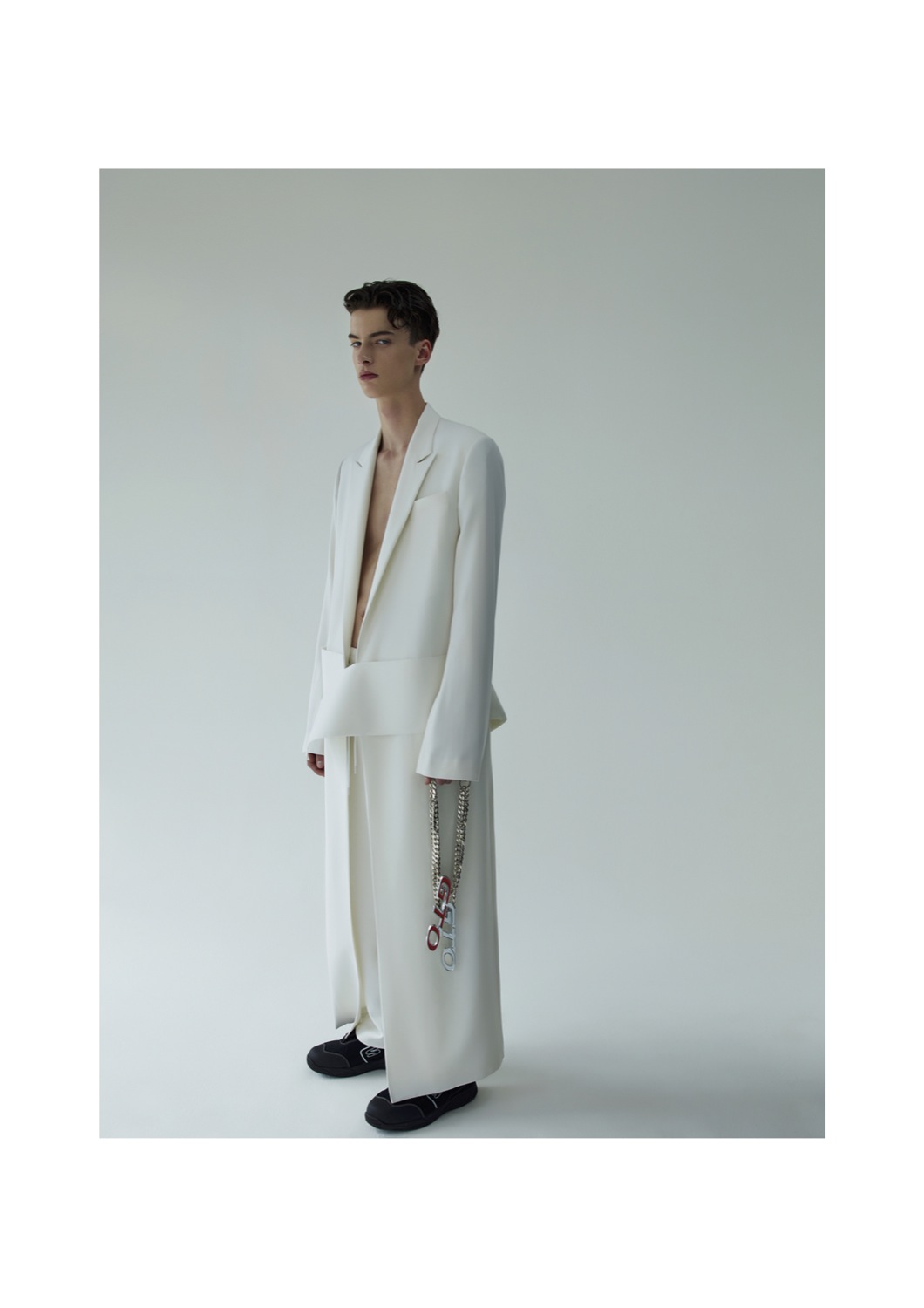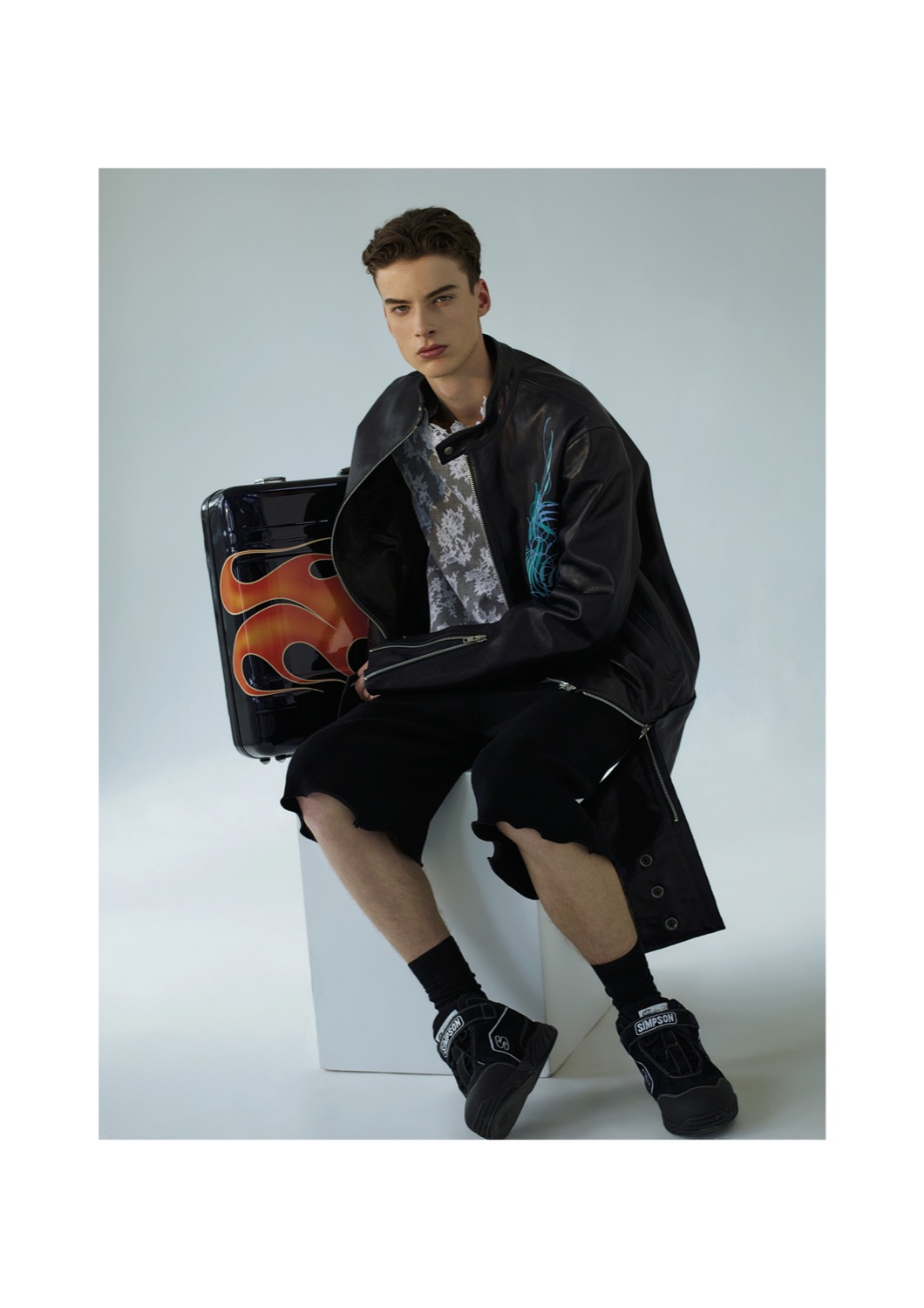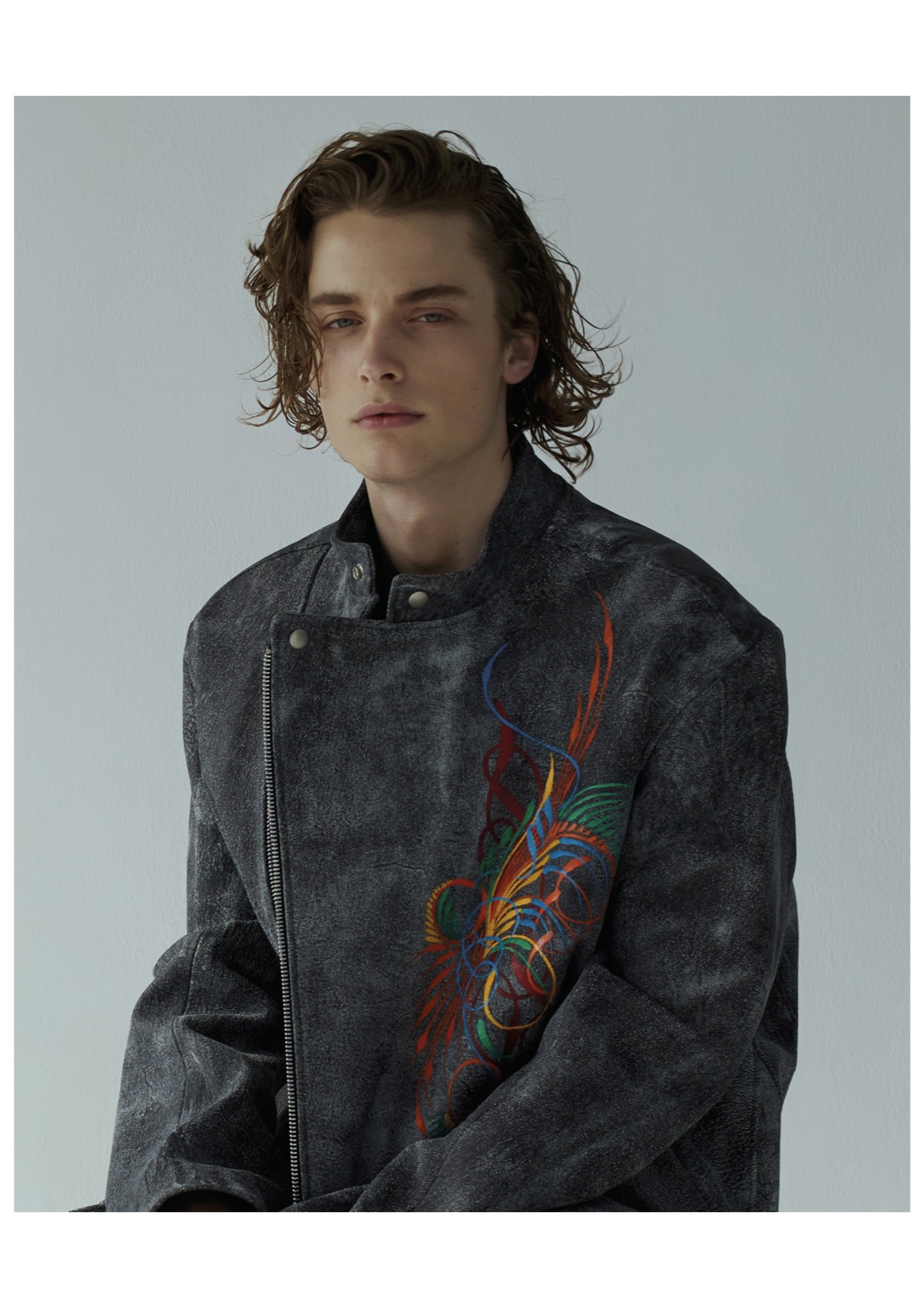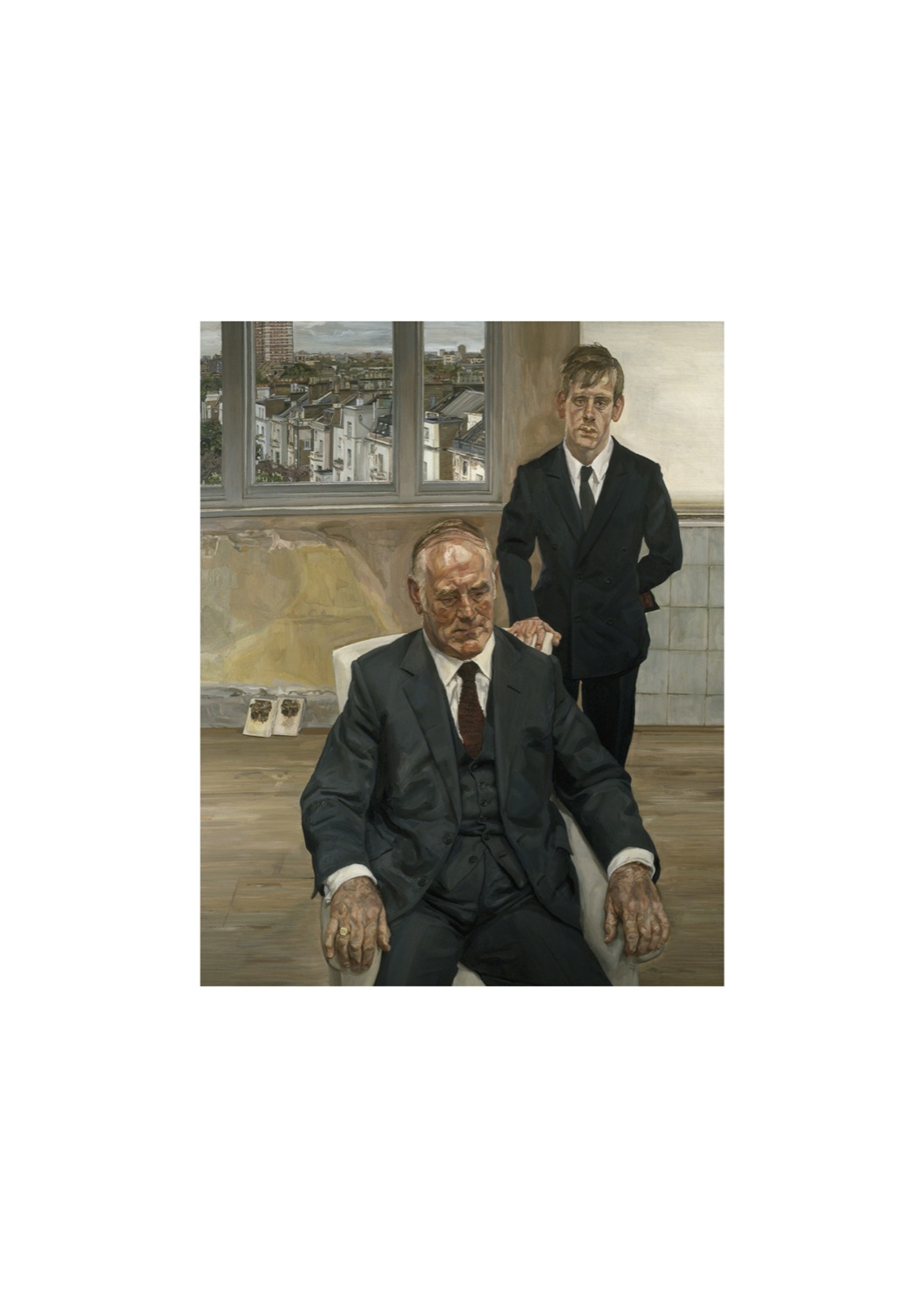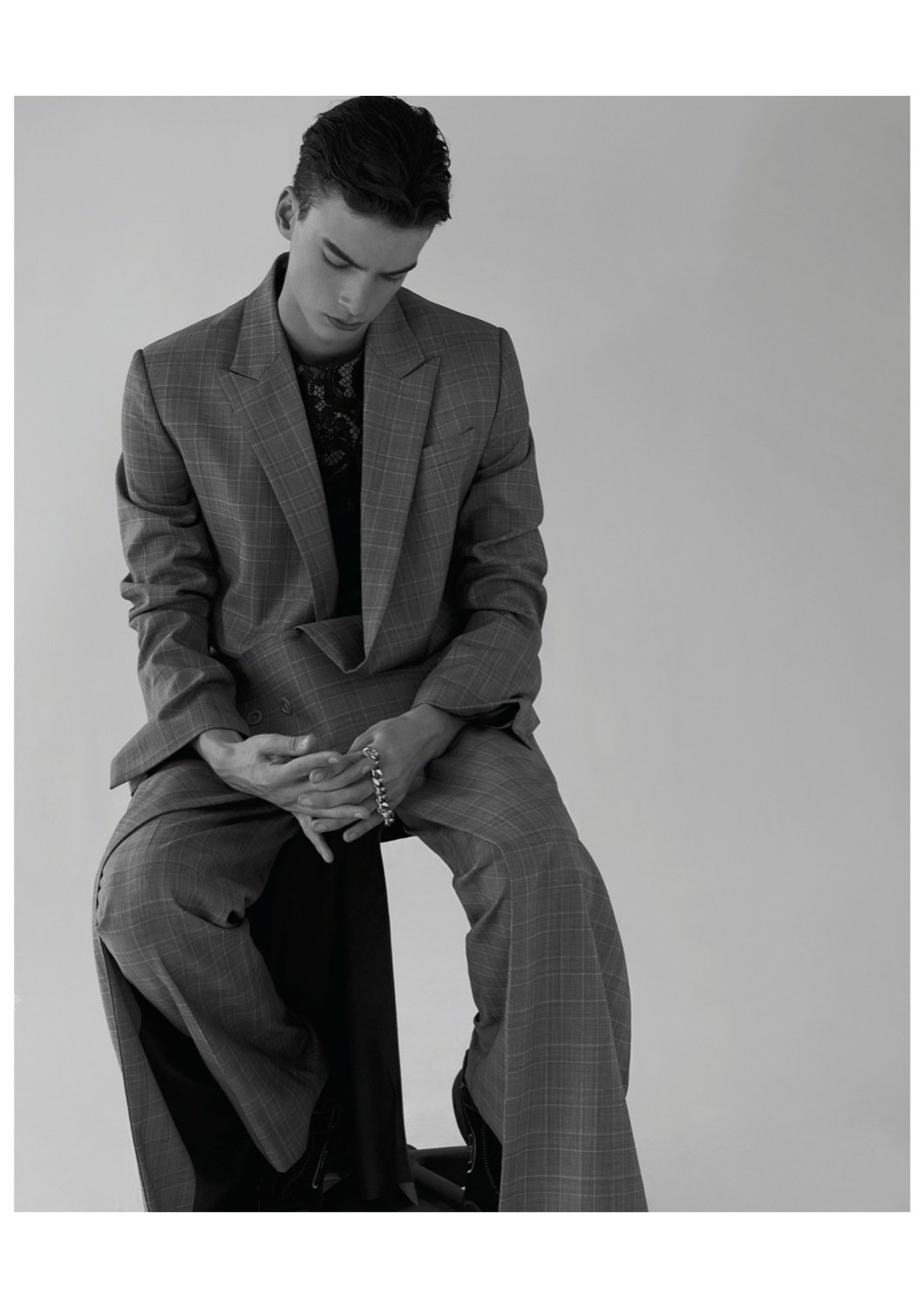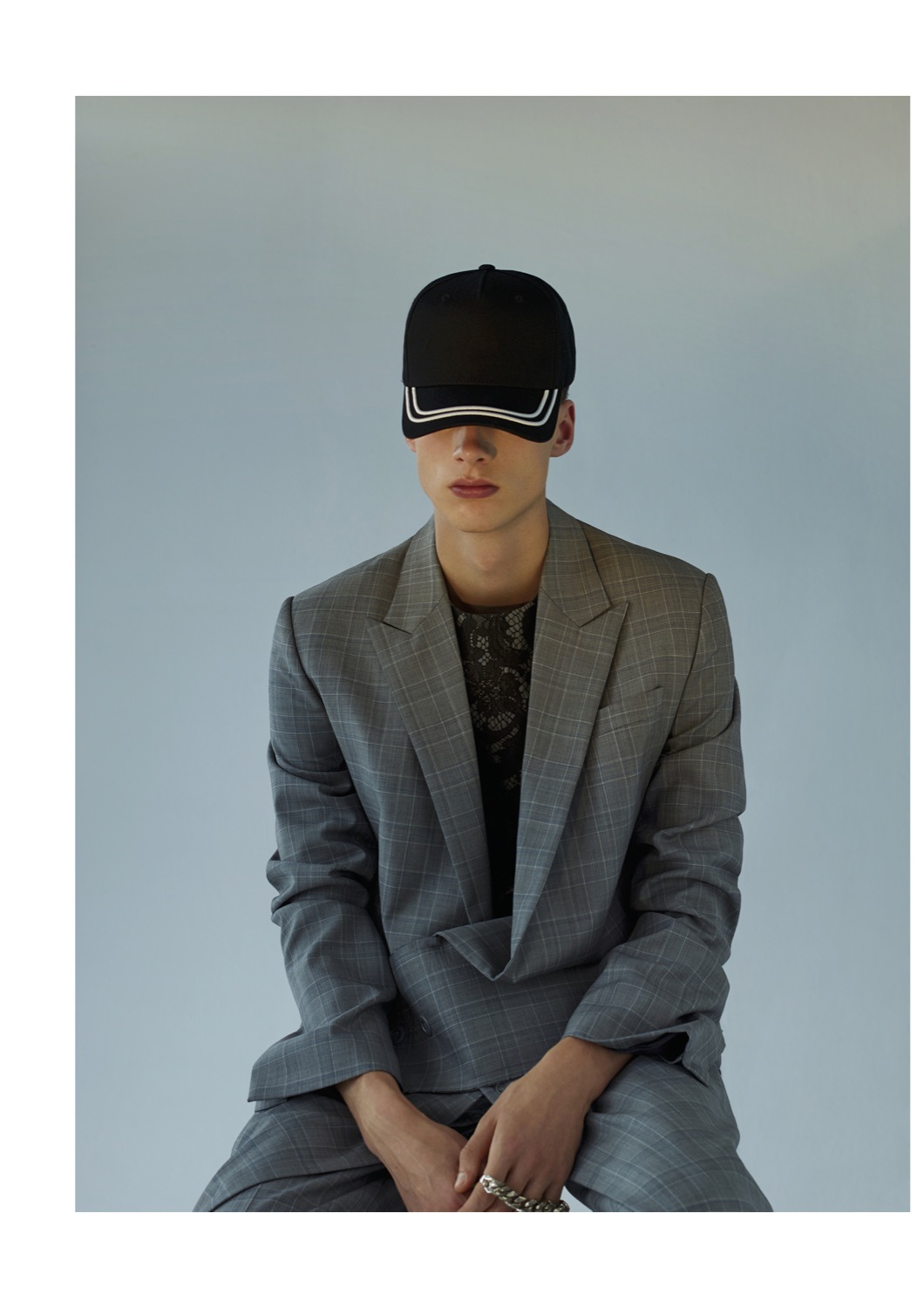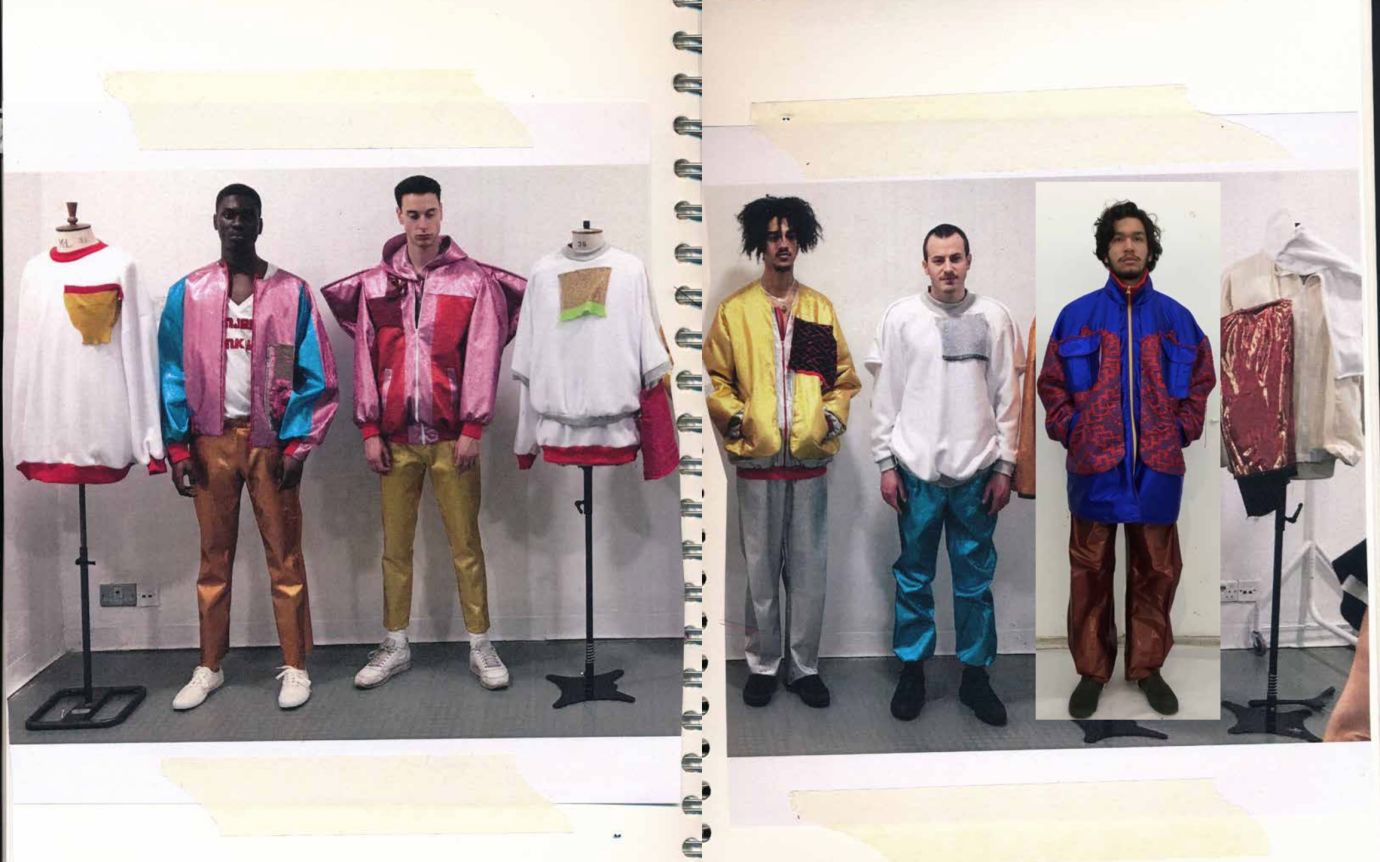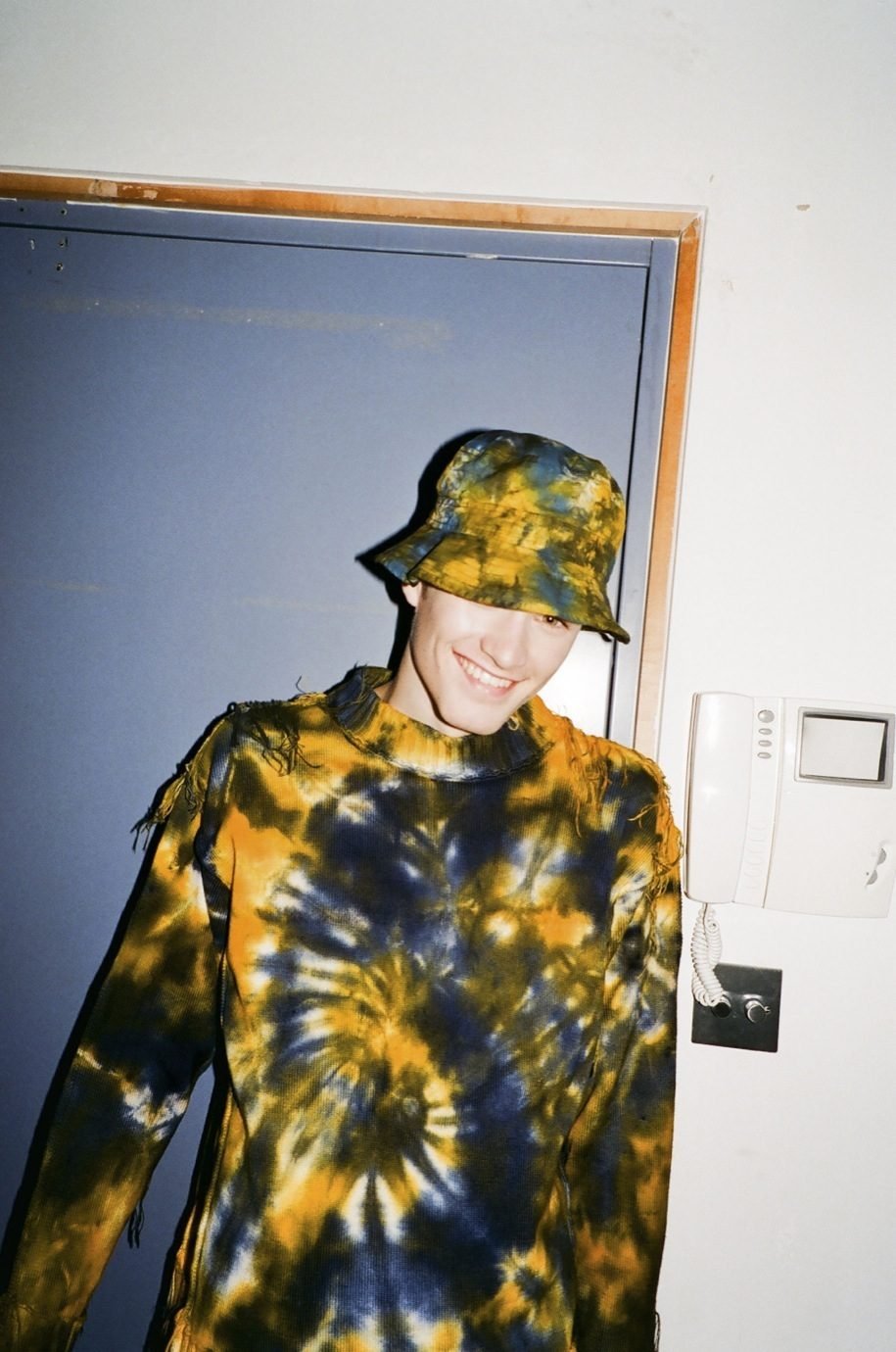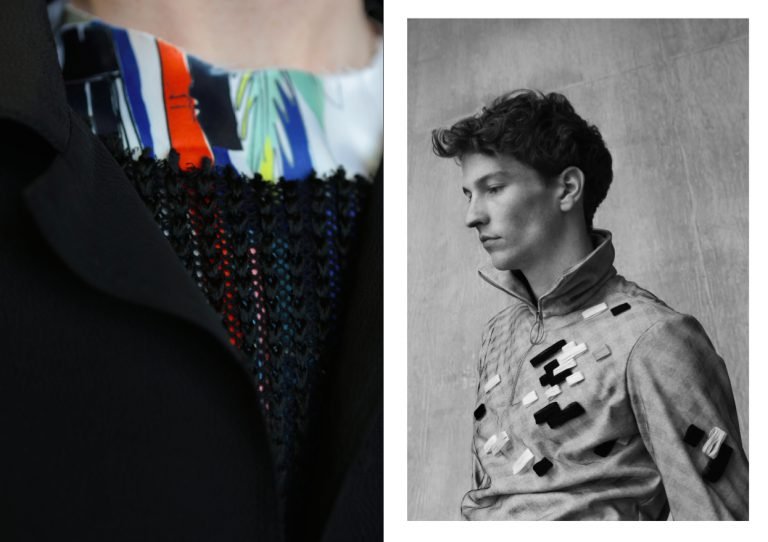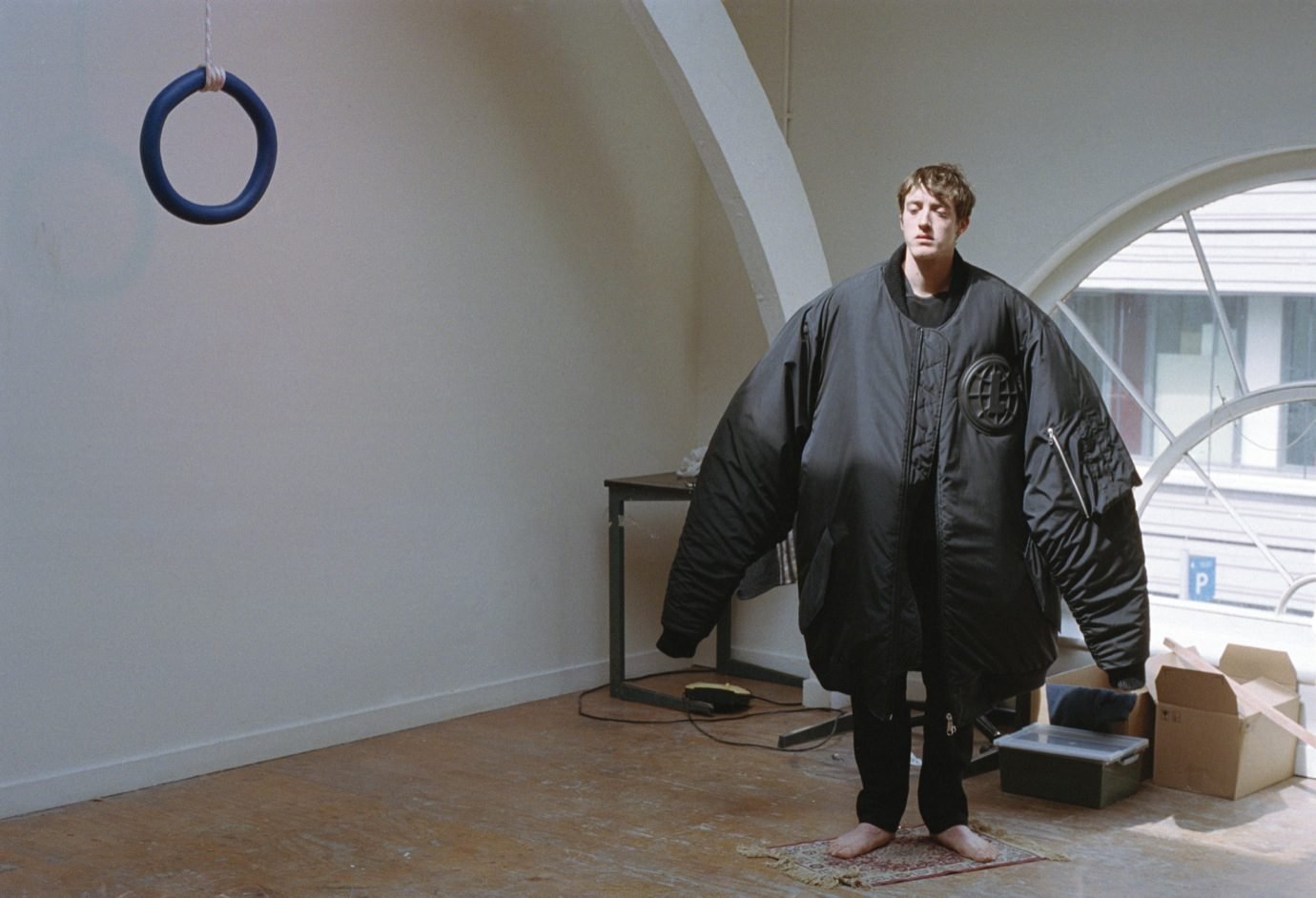How did your collection develop during the course of the year?
To realize the originality of the concept, American Kustom Kulture, I collaborated with American custom artist Steve Kafka. We discussed a lot to find the right materials and to share the vision about the final result. Because of the distance between London and Phoenix, everything was to be done without any actual tests. It was a bit risky, but the situation helped me to focus on finding the best solutions. After making the final garments, I shipped three leather jackets to Phoenix with 2D design plans for custom pinstriping. He understood my intention very well and the result was successful.
What does your development process usually look like?
I select the main theme and ‘message’, and imagine the mood of what I would like to develop in real life. Then I start to research about the subject. It can be about an actual garment or just an image. During my development process, I prefer to try something I haven’t tried before. Usually I find some people who have the experience or knowledge about the specific subject I’m working with. I find the solutions with discussions and experiments.
What did you do during your placement year?
I interned at Alexander McQueen and Maison Margiela’s menswear team during my placement year.
I experienced the whole working process for the collections while working in the studios. I also worked with various types of practical skills as a menswear designer. Especially the artisanal work at Margiela’s SS16 was very special experience for me.
Did your experience in the industry give you a better insight into how the business of fashion actually works?
There is big difference between school and the industry, which is organized with various departments of professionalism. I learned how the design and collections are produced working with a team.
What advice would you give for students choosing their placements?
It might be difficult to get a job out of your placement, but it will definitely be beneficial for your future. Getting experience from the right places will contribute to your professionality. Since each studio has different systems and working cultures, it’s also really important to pay attention and listen to the experienced people in the studios where you’d like to work.
Graduating is about the scariest thing for an undergraduate student to think of. How was that experience for you? Did anyone approach you after the show?
Graduating was scary and exciting at the same time. The reality of fashion is very tough, especially for the ones who are new to the business. But there are also many opportunities arising when we finish, so we need to be prepared to understand what we really want to do and to concentrate on.
Do you think you will stay in fashion?
Yes, I’ll stay in fashion, but I’m still figuring out how I’d like to work.
What are your plans for the immediate future?
I want to join a brand and try to learn the system of the industry.
Do you have any plans for the not so near future?
As my long term plan, I want to make a team where we can work with our own vision and create our own system. And I want to create a school for art and design.

